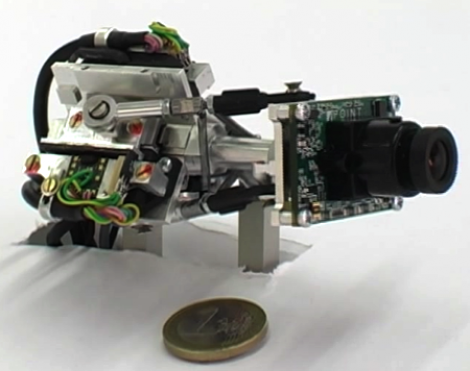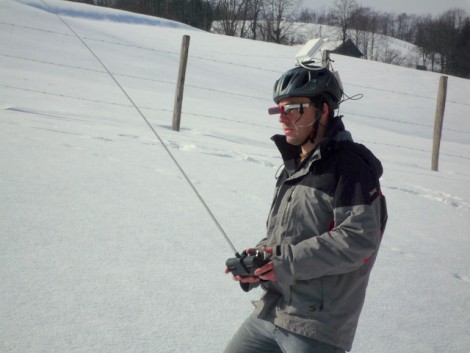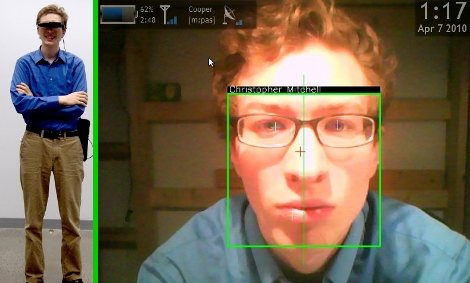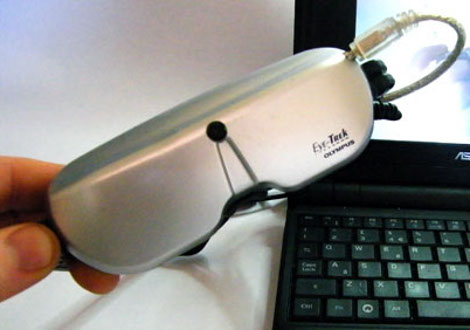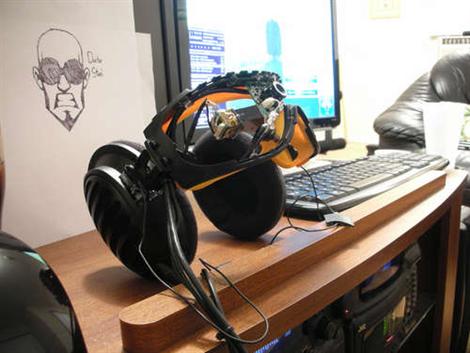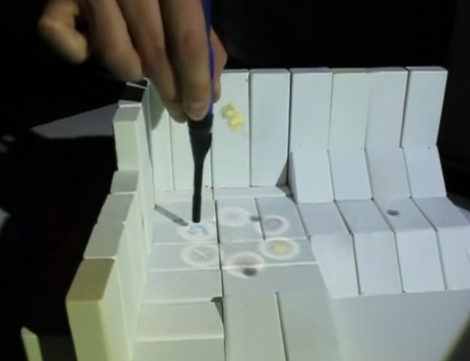
[Raj Sodhi] and [Brett Jones] have been working on interactive augmented reality as part of their research at the University of Illinois. What they have come up with is a stylus-based input system that can use physical objects to create a virtual landscape. Above you can see that an environment was built using white blocks. A camera maps a virtual world that matches the physical design. From there an infrared stylus can be used to manipulate virtual data which is projected on the blocks.
What they’ve created is a very advanced IR Whiteboard. There are buttons on the stylus, one of which opens the menu, made up of circles that you can see above. From there, you can select a tool and make it do your bidding. After the break there’s a video demonstration where a game is set up, using the menu to place tanks and mines on the 3D playing field. We wonder how hard it would be to do this using a projector and a Kinect.
Continue reading “Projector Introduces Augmented Reality To Reality”

